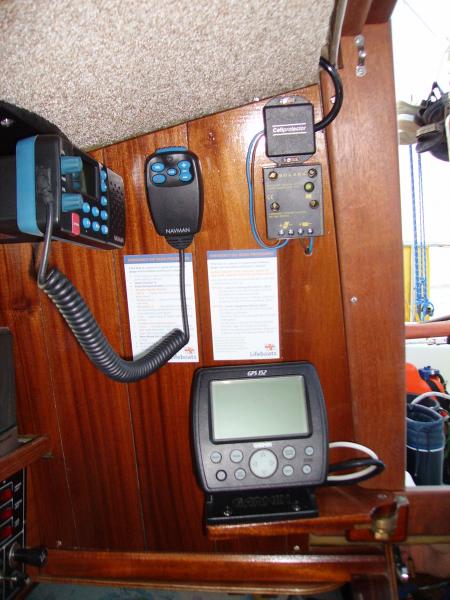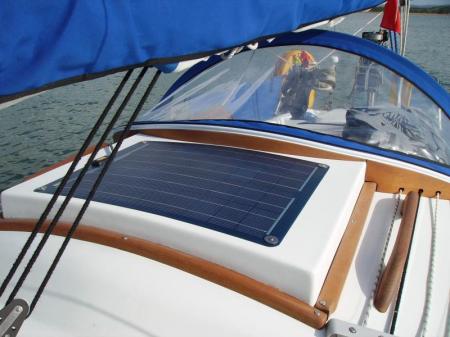Solar panels
Jonny Moore has kindly allowed us to reproduce this article with additions by eCorribee:
We spent a lot of time researching and discussing the best way of providing power for Casulen II. First it is necessary to understand the limitations that we were working to. The auxiliary engine on Casulen II is a 1964 Seagull century longshaft with a 9” 5 bladed prop, and whilst this provides a brilliant auxiliary engine, it has no charging coil and therefore gives no charge to the battery.
The first stage was to go through what equipment we were using and work out how much power this was taking (see table below). This quickly showed us that, without a tillerpilot, there really was no problem, and if we converted all the lights (cabin and navigation) on board to LED, a solar panel could easily cope. Many people have advised that a solar panel would not be ample, but many others have assured us that it would keep the battery topped up without any problems. So far, this year has shown us that the latter is true for Casulen II. As yet we have not fitted a tillerpilot, but, due to Casulen II being so light on the helm, this will probably not be a problem.
Equipment fitted:
- Solara Solar panel – 34 watts
- Solara Regulator – 60 watts
- Freedom Marine DC31T 110AH Battery
Many thanks to Barden for all the help and advice.
The way we calculate power use is to look up the rated Amperage (=mA*1000) for each piece of equipment. Multiply the Amperage of each item by its Voltage (typically 12V) to calculate the power (in Watts) used by each item. Multiply this by the average number of hours you expect to use each item and you will end up with the average number of Watt hours per day the equipment will use. Total the average Watt hours per day for all your items of equipment and that tells you how much power your charging sources need to supply during a day to keep your batteries topped up.
The rule of thumb for the number of Watt hours per day a solar panel will generate in Europe is to multiply the panels rated power output by four. So a 34W panel should give approximately 136 Watt hours per day. This rule of thumb is clearly not going to work so well if you are in the tropics in summer or in the Arctic during winter.
| Item | Amps | Watts | Average hours/day | Average Watt hours/day |
| Garmin 152 | 0.1666 | 2 | 3 | 6 |
| Log | 0.02 | 0.24 | 12 | 2.88 |
| Echo | 0.022 | 0.264 | 2 | 0.528 |
| VHF | 0.25 | 3 | 8 | 24 |
| Interior LED | 0.1 | 1.2 | 1 | 1.2 |
| Masthead LED | 0.17 | 2.04 | 2 | 4.08 |
| Subtotal | 38.688 | |||
| ST1000 | 1.5 | 18 | 0 | |
| 1 | 12 | 8 | 96 | |
| 0.5 | 6 | 0 | ||
| Total | 134.688 |
Contribute
Do you have a story, information, brochure, manual, link or other relevant content that should be on this page? If so, we would be very grateful if you would leave it as a comment or email corribeeeditors@googlemail.com so we can post here – thanks!






February 16, 2017 at 04:24 |
Where is the second solar panel fitted? Do you run them both to one charge controller?